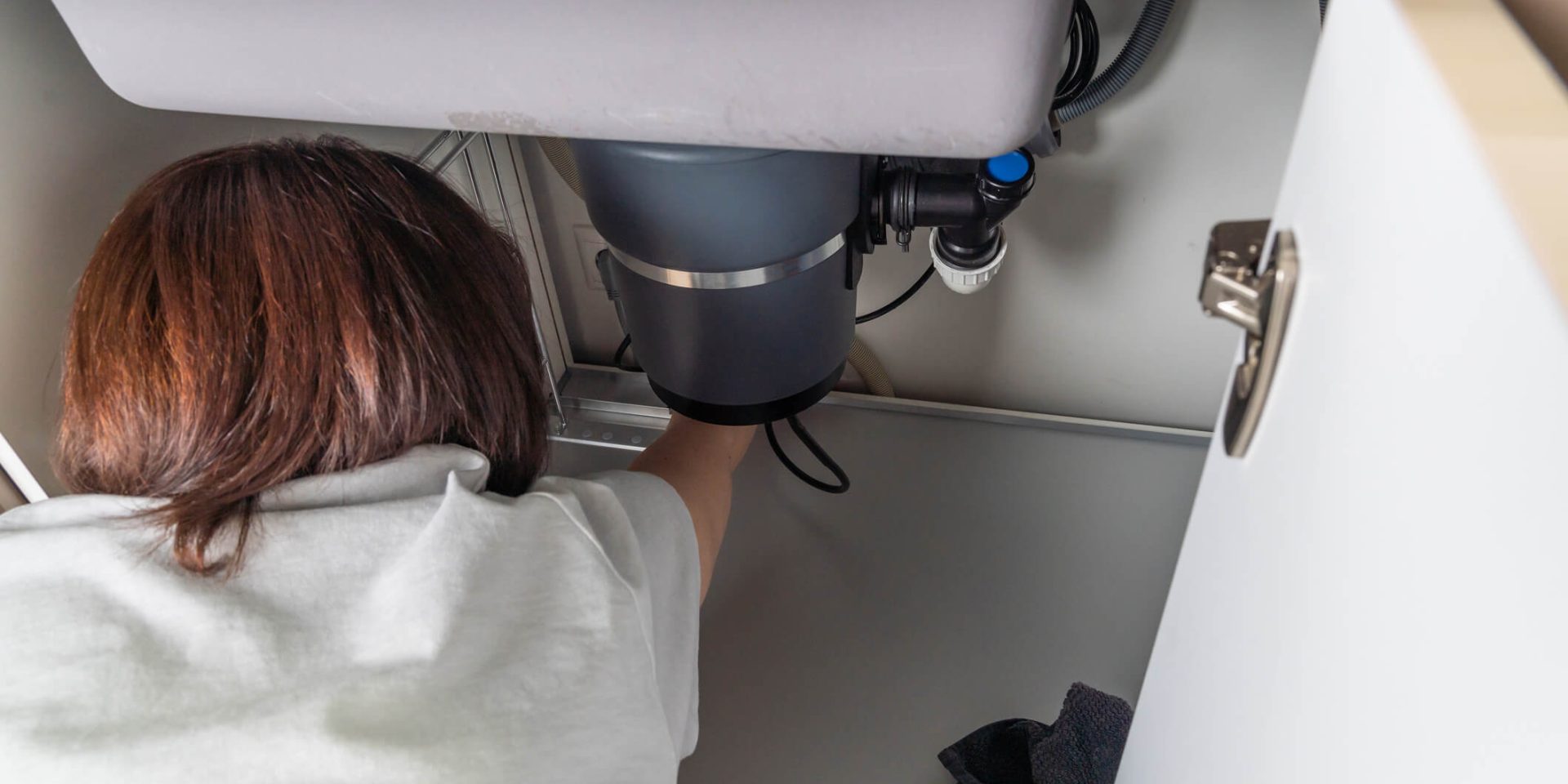Every person maintains their own idea when it comes to Garbage Disposal Leaking From Bottom.

Waste disposal unit are necessary kitchen devices that assist in getting rid of food waste effectively. However, a dripping garbage disposal can be an irritating and untidy trouble to handle. The good news is, numerous leaks can be repaired conveniently with a few simple steps. In this article, we will certainly talk about exactly how to take care of a leaking garbage disposal properly.
Intro
Waste disposal unit are set up under kitchen sinks and are designed to shred food waste right into smaller sized pieces, permitting it to travel through the plumbing system quickly. While these devices are usually trusted, leaks can occur gradually due to damage, loose links, or damage to the unit.
Usual Reasons For Leakages in Garbage Disposals
Worn Seals and Gaskets
Seals and gaskets play a critical function in protecting against water from leaking out of the garbage disposal. With time, these components can degrade, resulting in leakages around the disposal device.
Loose Links
The connections between the garbage disposal and the pipes system can become loose gradually, triggering water to leak out during procedure.
Cracks or Openings in the Disposal Unit
Physical damages to the garbage disposal, such as splits or holes in the real estate, can also lead to leaks.
Recognizing the Source of the Leakage
Prior to attempting to deal with a leaking garbage disposal, it is vital to identify the resource of the leak. This can normally be done through visual assessment or by performing simple tests.
Visual Assessment
Evaluate the waste disposal unit unit carefully for any kind of signs of water leakage. Pay very close attention to locations around seals, gaskets, and link factors.
Evaluating for Leakages
One means to test for leaks is by running water through the disposal unit and checking for any visible signs of leak.
Devices and Products Needed for Taking Care Of a Dripping Garbage Disposal
Before beginning the repair work process, collect the essential devices and materials, consisting of a screwdriver, flexible wrench, plumbing technician's putty, replacement seals or gaskets, and epoxy or patching material for fixing fractures or holes.
Step-by-Step Guide to Taking Care Of a Leaking Waste Disposal Unit
Shut off the Power
Before trying any repair services, guarantee that the power to the waste disposal unit unit is turned off to stop the risk of electrical shock.
Locate the Leak
Recognize the exact place of the leakage and identify the reason.
Tighten Connections
Use a wrench to tighten any kind of loosened connections between the disposal device and the pipes system.
Change Seals or Gaskets
If the leak is due to worn seals or gaskets, get rid of the old parts and change them with brand-new ones.
Patching Splits or Openings
For cracks or holes in the disposal unit, use epoxy or an appropriate patching product to secure the broken location.
Checking the Garbage Disposal After Repair
Once the repair work is complete, test the garbage disposal by running water through it to ensure that the leakage has been dealt with.
Preventive Upkeep Tips to Avoid Future Leaks
To stop future leakages, it is essential to perform normal upkeep on your waste disposal unit. This consists of keeping it clean, avoiding putting non-food items or difficult things down the disposal, and periodically checking for leakages or various other issues.
Verdict
In conclusion, taking care of a dripping garbage disposal is a fairly uncomplicated procedure that can be completed with basic tools and materials. By complying with the actions laid out in this write-up and exercising preventative upkeep, you can maintain your garbage disposal in good working condition and avoid costly repair work in the future.
What to Do About a Leaking Garbage Disposal
A leaking garbage disposal often goes unnoticed until you confront a sopping cabinet, a foul-smelling puddle, or an audible drip-drip-drip from the unit. The fix can be frustrating, too, because the leak can stem from a number of components in the system. Fortunately, with a little sleuthing, you can zero in on the leak and—depending on the exact location—stop the icky oozing and repair the component that caused it. Worst case scenario, if it turns out that the garbage disposal must be replaced, installing a new one is a reasonable do-it-yourself task for those with basic plumbing skills. Read on to keep the cash you’d otherwise hand over to a pro.
Prepare to find the leak
Prior to testing the garbage disposal for leaks, unplug it at the wall outlet and turn off the power from the breaker box to prevent electrical shock. Then insert a watertight sink stopper into your sink drain and wipe the unit dry with a clean cloth. In any handy container, mix a few drops of food coloring into a few cups of water, and pour the dyed water onto the sink stopper to help you locate the leak.
Investigate the source
- the top, where the disposal meets the sink drain
- the side, where the dishwasher hose or main drain pipe connects to the disposal
- or the bottom of the unit
Inspect each of these locations while gliding a light-colored rag over the unit; the dyed water will readily show on the rag and reveal the location of the leak. If a leak isn’t immediately apparent, remove the sink stopper and pour a few more cups of dyed water down the sink drain, then check for leaks again. Leaks near the top of the unit are more likely to show themselves while the sink is plugged, while side and bottom leaks are more noticeable while the sink is unplugged.
The metal sink flange that sits directly inside the sink drain is typically sealed around the top with plumber’s putty (a clay-like sealant) and then secured from under the sink with bolts. If the plumber’s putty deteriorates, or the bolts loosen, the flange can no longer form a watertight seal between the sink drain and the disposal—which could cause a leak at the top of the unit.
To reseal the leaky flange, you must first detach the garbage disposal. Start by loosening the screws securing the main drain pipe to the disposal, then loosen the screws in the metal clamp securing the dishwasher hose to the disposal and detach the drain pipe and dishwasher hose from the disposal. Loosen the screws in the mounting ring that connects the disposal to the metal mounting assembly beneath the sink, then pull down the disposal and carefully set it on a clean, dry surface. Loosen the bolts in the mounting assembly with a wrench, then pull down the mounting assembly and set it near the disposal.

We hope you enjoyed our piece on Garbage Disposal Leaking From Bottom. Thank you so much for finding the time to read our short article. In case you appreciated our article if you please be sure to share it. I recognize the value of reading our article about Why Is My Garbage Disposal Leaking From the Bottom?.
Course Detail
Comments on “Your Guide to Resolving a Leak in Your Garbage Disposal”